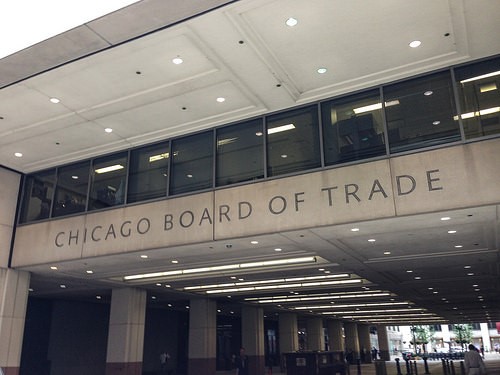Wall Street may now be the bastion of the trading world, but it’s not always been that way. What’s more, it may not be that way forever. Through a combination of history and innovation, options trading has evolved over the last few centuries to the point where it’s now making its mark in the online world.
Ancient Olives Kick-start a Trading Revolution
According to the Financial Industry Regulatory Authority (FINRA), options trading dates back to 350 B.C. Despite the process of buying/selling options (i.e. a listing of 100 shares of stock) being a fairly modern pursuit, the Ancient Greeks were using a similar method to exchange goods. As described by Aristotle’s Tale of Thales of Miletus in Politics, a philosopher and a mathematician made money by buying options on olive presses. Put simply, the forward-thinking duo bought the right to use the presses before a strong harvest. When the fruit came to bear, the rights were worth more than the investment.
What was interesting about the ancient olive deal is that it set the tone for options trading we know today. Unlike futures contracts that force an obligation on you at some point in the future (to buy or sell by a certain date/price), options give you the option. So, in the case of the philosopher and the mathematician, they had the option to exercise their right to use the olive press or not. This flexibility is something that intrigued financial types. Indeed, by the Middle Ages, Mediterranean traders were using credit contracts. Similar to options, the contracts gave the seller a choice to buy cargo from a ship if it didn’t come in on time to satisfy the intended buyer’s needs. In other words, they had the option to pick up a bargain if an intended deal didn’t take place.
Enter the COBT and Regulated Options
According to a eToro im Test report, in 1848, the Chicago Board of Trade (CBOT) opened up and began offering the first form of options trading in the US. As much of an institution today as it was back then, the CBOT made options trading popular. However, what it didn’t do was offer a standardised or regulated way of handling these investment contracts. It wasn’t until the late 19th century that financier Russell Sage put forward a way of linking the price of options to the underlying security and interest rates. The stock market crash of 1929 lead to strict regulations that still form the basis of options trading today.
While the majority of options traders are linked to a major financial institution, the landscape has changed with the advent of the internet. Thanks to online options trading sites, novices can enter into flexible financial contracts in the same way as professionals. In fact, what internet trading has done is open up the industry on a global scale. By offering 1,200 options from 23 exchanges on securities such as energy, interest rates and metals, modern trading platforms have taken this age-old notion of flexibility to the extreme. Although the vehicle for accessing this flexibility has changed, the premise hasn’t.
Technology Takes Options Trading Back to Its Roots
Quite where the industry will go in the future is unclear. What we do know, however, is that options trading has come a long way since Aristotle and his olives. However, what’s perhaps the most interesting is how things have also gone full circle. When the COBT started to offer options trading, it quickly became the reserve of the wealthy. However, in Ancient Greece, it was something the commoner could do. Today, the internet is taking things back to how they were. By reducing the cost of trading and making it easier to invest, the average person can now speculate on options. That, in practice, is the real history of options trading.


